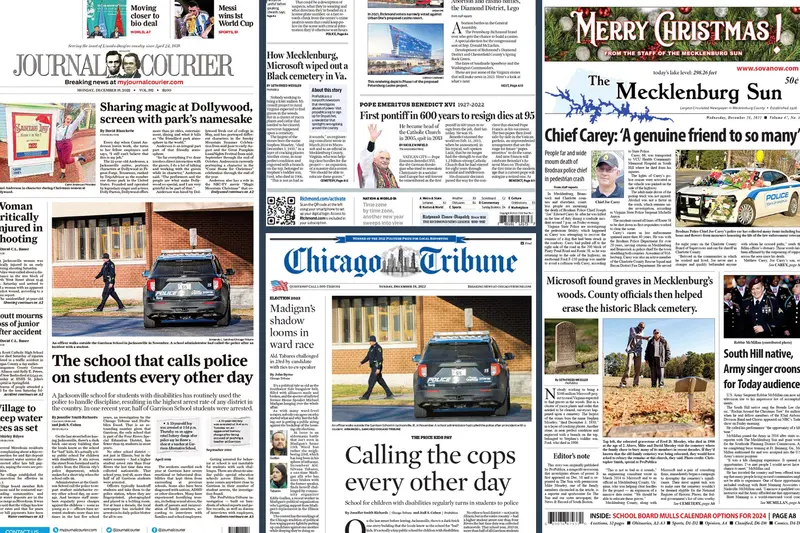Little Known Facts About News Articles.
Little Known Facts About News Articles.
Blog Article
The Best Strategy To Use For News Articles
Table of ContentsThe Best Guide To News Articles7 Easy Facts About News Articles ShownAn Unbiased View of News ArticlesThe News Articles IdeasThe Buzz on News Articles
Great understanding of various topics offers pupils an affordable edge over their peers. Although digital and social networks are conveniently obtainable, we must not forget exactly how essential it is to check out the papers. Parents need to attempt and instill the practice of reading a paper as a day-to-day routine to proceed the tradition of the adored print tool.Newspaper article likewise have a minimum of among the following crucial qualities about the intended target market: closeness, prestige, timeliness, human passion, curiosity, or effect. The relevant term journalese is in some cases made use of, typically pejoratively, to describe news-style writing. An additional is headlinese. Papers typically follow an expository writing style.
Within these limitations, information tales likewise aim to be extensive. Among the larger and extra highly regarded newspapers, justness and equilibrium is a major element in presenting information.
Newspapers with a worldwide audience, for example, often tend to use an extra formal design of composing. News Articles.; common design guides consist of the and the US Information Design Book.
Fascination About News Articles
As a rule, journalists will not make use of a lengthy word when a brief one will do. They utilize subject-verb-object building and construction and vivid, active prose (see Grammar). They provide stories, instances and allegories, and they hardly ever depend on generalizations or abstract ideas. News writers attempt to stay clear of making use of the very same word greater than once in a paragraph (often called an "resemble" or "word mirror").
Headings sometimes omit the subject (e.g., "Jumps From Watercraft, Catches in Wheel") or verb (e.g., "Pet cat female fortunate"). A subhead (likewise subhed, sub-headline, subheading, subtitle, deck or dek) can be either a subservient title under the main heading, or the heading of a subsection of the write-up. It is a heading that precedes the major text, or a group of paragraphs of the primary text.

Added billboards of any of these kinds may appear later on in the short article (particularly on subsequent pages) to entice further analysis. Such signboards are also utilized as guidelines to hop over to these guys the write-up in other sections of the magazine or website, or as advertisements for the item in various other publication or websites. Common structure with title, lead paragraph (recap in strong), other paragraphs (information) and contact details.

Instance of a hard-lead paragraph NASA is suggesting an additional room job. The budget demands around $10 billion for the task.
The NASA statement came as the firm asked for $10 billion of appropriations for the task. An "off-lead" is the second essential front web page news of the day. The off-lead appears either in the top left edge, or straight below the lead on the. To "bury the lead" is to start the short article with history info or information of second relevance to the viewers, requiring them to find out more deeply into a post than they ought to have to in order to find the crucial factors.
The 10-Minute Rule for News Articles
Common use is that or more sentences each develop their own paragraph. Reporters typically describe the company or structure of an information story as an inverted pyramid. The crucial and most intriguing components of a tale are placed at the start, with supporting details following in order of diminishing significance.
It permits people to discover a topic to only the depth that their interest takes them, and without the charge this article of information or nuances that they could take into consideration unimportant, but still making that information offered to a lot more interested viewers. The inverted pyramid structure also enables write-ups to be trimmed to any type of arbitrary size during layout, to fit in the area available.
Some authors start their stories with the "1-2-3 lead", yet there are many sort of lead available. This format usually starts with a "5 Ws" opening paragraph (as defined over), followed by an indirect quote that offers to sustain a significant component of the initial paragraph, and after that a direct quote to sustain the indirect quote. [] A twist can describe numerous points: The last tale current broadcast; a "pleased" story to finish the show.
Longer articles, such as publication cover articles and the pieces that lead the inside sections of a newspaper, are recognized as. Attribute tales vary from straight news in several ways.
See This Report about News Articles
The reporter often details interactions with interview topics, making the item more personal. A feature's first paragraphs commonly connect a fascinating moment or event, as in an "unscientific lead". From the details of a person or episode, its sight promptly expands to generalities regarding the tale's topic. The section that indicates what an attribute is around is called the or signboard.

The Editor's Toolbox: A Reference Guide for Beginners and Professionals (2001) Allan M. Siegal and William G. Connolly. The New York City Times Guidebook of Design and Use: The Authorities Design Guide Made Use Of by the Writers and Editors of the Globe's The majority of Authoritative Newspaper (2002) M. L. Stein, Susan Paterno, and R.
Report this page